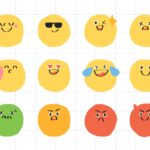Tracking your child’s progress through ABA therapy is crucial for several important reasons and can help you determine what ABA therapy clinic best meets your child’s needs. Consistent monitoring and documentation of progress allow you to accurately evaluate the effectiveness of the interventions and techniques being used. Here are some key reasons why progress tracking is so essential:
- Progress data informs goal setting and planning. By collecting detailed data during each session, you build an understanding of which behaviors and skills are improving or need more work. Goals can then be adjusted based on objective data rather than subjective impressions. Data reveals precisely which target behaviors need to be worked on for desired progress.
- Documentation of milestones reached provides motivation and validation. Seeing concrete progress shown through graphed data, skill assessments, and other tracking methods provides reinforcement that all the hard work is paying off. Progress can be gratifying and motivating for both child and parent.
- Analytics drive intervention decisions. The data collected through consistent progress tracking allows an analytical review of which techniques are working and which may need to be changed. Trends in the data inform the refinement of interventions. Progress plateaus or setbacks can trigger therapy modifications.
- It demonstrates progress to others. Clear documentation of a child’s improvement provides objective evidence that ABA therapy is effective. Progress reports can be shared with school administrators when advocating for services. Visual data displays also engage the children themselves.
- Consistency is key for useful data. Regular, consistent tracking provides a reliable gauge of behaviors over time. Sporadic or incomplete data is less useful for spotting trends. A consistent system needs to be implemented.
Progress tracking is a pillar of effective therapy, driving many aspects from goal planning to evidence of effectiveness. Consistent use of target metrics provides an objective record of the child’s improvement on this therapeutic journey.
Data Collection
Consistently track target behaviors during therapy sessions. Tally frequencies of tantrums, self-harm, or vocal requests. Time duration of positive play or on-task attention. Have data sheets, notebooks, or apps ready to precisely record each episode as it occurs.
Use tables, charts, and graphs to organize data later for easy visualization of behavioral trends over time. Include varied data sources like checklists, assessments, anecdotal observations, parent feedback, and video reviews for a fuller picture.
The trajectory of graphed data reveals the rate of progress and technique effectiveness. Increasing positive behaviors, decreasing problems, and skills gained show improvement. Use data analytics to determine if adjustments to interventions are needed for continued progress. Objective data is crucial for making informed adjustments over the therapy duration.
Behavioral Assessment Tools

Standardized assessments administered periodically can provide concrete measures of a child’s development and progress in therapy. Commonly used tools include the Verbal Behavior Milestones Assessment and Placement Program (VB-MAPP), the Assessment of Basic Language and Learning Skills (ABLLS), and the Assessment of Functional Living Skills (AFLS). These evaluate communication, social, academic, adaptive, motor, and behavioral skills through direct testing and checklist-based evaluations.
Results are scored to quantify progress over time as skills are acquired. Informal assessment methods like criterion-based probes and curriculum-based measurements also track mastery of goals. Using a combination of standardized assessments and informal probes provides comprehensive data to identify strengths, weaknesses, and growth in a child’s learning and behaviors during interventions. Consistently tracking scores over the therapy duration yields goal-driven data.
Graphing Data
Graphing behavioral data enables clear visualization of progress over the duration of therapy. Line graphs work well to plot frequency or duration data points over time during the intervention. For example, tracking tantrum episodes or time spent engaged in play along a timeline illustrates trajectories of target behaviors.
Bar graphs help compare the acquisition of skills across assessment periods or before/after the start of an intervention. Graphing quantitative data makes behavioral trends easy to analyze for both parents and therapists. Progress monitoring is enhanced by consistently graphing key data like behavior frequency, duration, assessment results, and skill acquisition.
The graphed metrics should correlate directly to the learning and behavioral goals targeted by the ABA treatment plan. Regular graphing leads to responsive data-driven adjustments to therapy. Visual data displays keep parents motivated by validating progress.
Two examples of how to track data:
Behavioral Data Graph
Where the X axis represents tantrums thrown and the Y axis represents the number of weeks completed with ABA.
This graph represents the frequency of a target behavior (e.g., tantrums) observed during therapy sessions over several weeks. It helps parents visualize the changes in the behavior over time and assess the effectiveness of the intervention.
Skill Acquisition Graph
For this you would graph performance over sessions
This graph represents the higher level of skill your child may display over the time they undergo therapy to help show the change in your child’s development.
Anecdotal Records
Anecdotal records involve writing brief objective observations and notes about a child’s behaviors during or after therapy sessions. Unlike quantitative data, they provide qualitative documentation of progress. For example:
- Note improved eye contact when giving instructions to pick up toys. Maintained gaze for approx. 8 seconds.
- Displayed spontaneous parallel play with peers at the park without prompts from a therapist. Interacted for 15 minutes.
- Requested “up” with arms raised toward dad after dinner – first unprompted request for pick-up.
- When denied iPad time, redirected focus to puzzle activity without tantrum behaviors arising.
- Recited ABCs song through letter “L” when asked – previously only reached “G”.
These specific observations on engagement, socialization, communication, behavior, and academics can be recorded in a simple journal or binder. Written in an objective tone, they capture incremental progress on therapeutic goals that data may miss. Reviewed regularly, they provide valuable qualitative insights into improvements that supplement quantitative data.
Goal Tracking Sheets
Goal tracking sheets are an effective progress monitoring tool. At the start of therapy, collaborate with the therapist to identify 3-5 priority goals to target (e.g. decreasing tantrums, increasing eye contact). Create a table or chart with columns for each goal, baseline performance, intervention techniques, weekly progress notes, and goal mastery criteria.
Update the sheets after each session by recording objective observations, data, and anecdotal notes related to each goal. Track how often the behaviors occur or skills are demonstrated. Assess whether new intervention techniques lead to improvements.
Over time, the sheets provide a comprehensive record of progress toward a goal mastery. Adjust goals as they are met and new targets are identified. Review the sheets regularly to visualize progress and make data-driven intervention decisions. Having concrete written records motivates parents by validating incremental success. Goal tracking sheets are a cornerstone of ABA progress monitoring practice.






